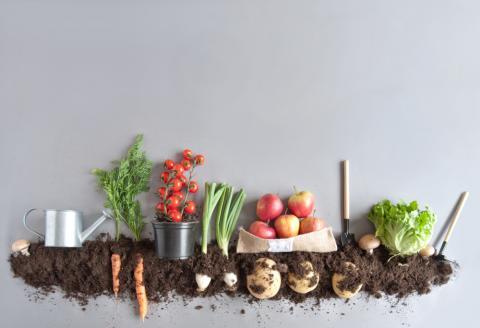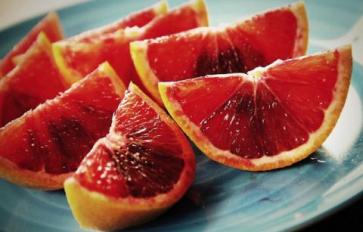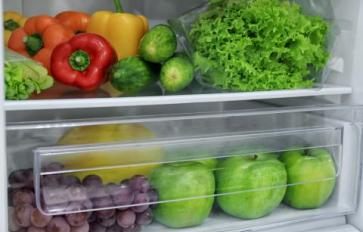
Started composting already? Well, the plants, the soil, and the Earth thank you for it. But let’s up the composting game with a few well-placed hacks and tips!
You may have a green thumb, be a greenery newbie, or a verdant veteran. Whatever be the case, the one undeniable advantage your garden can have over others is if you compost. Not only does composting turn most of your kitchen waste and garden trash into sustainable and layered manure, but it also enriches the soil like nothing else. And if this is not enough to sell you a spade and some sweat spent on a composting pit, remember composting means you save money on manure and get better green produce for it as well.
Why Composting Rocks
So let’s see…composting recycles a lot of your kitchen and garden waste, enriches the soil to help it generate better green produce, and also makes for better budget gardening.
Frankly, composting isn’t all that complicated if you put your mind, soul, and a little bit of hard work into it. The easiest way to make a compost pile is by digging a hole that’s a foot deep and at least three-four feet wide. Start with food scraps (vegetarian please) and cover with grass clippings, old leaves, and other non-diseased waste from your garden. Add a layer of organic manure, and then keep going till the pile is as high as it’s wide. You may leave this covered with a tarp, or cold compost it in hot and humid conditions.
Getting Into The Composting Rhythm
Frankly, once you get over the initial teething troubles, composting will become a rhythm as easy as breathing for you. Here go a few yesses and nos when it comes to composting:
- Mixing a variety of food scraps (mostly raw food like fruit and vegetable peels, cores and discarded pulp, eggshells, nutshells, tea leaves, and coffee grounds) with grass clippings, hedge trimmings, and leaves is a great idea. This creates a healthy mix for the soil, as well as for the decomposition to begin.
- You may choose to sprinkle an activator on the food scraps to kickstart the decomposition. Activators enhance bacterial action so think about alfalfa, blood, bone meal, or cottonseed meal for the same.
- Fish, meat, dairy products, bones, fat, and grease are a no-no for the compost pile since not only do they need a lot of time to decompose, they also attract rodents and scavengers who can create a mess and prove to be a menace. In fact, this is the reason food scraps are buried deep within the pile.
- Remember to keep the pile a little damp, but not soggy enough to drown the organisms trying to decompose the pile.
- When adding plant clippings and waste, make sure not to add weeds or diseased plants. Also keep the toxic plants away from your compost pile since the very idea is to improve the soil, not turn it or what it produced into something poisonous. Weeds have too many seeds which may or may not decompose and adding weedy compost to the soil may give rise to a crop you never wanted in the first place.
- Finally, no pet litters, please. While manure is often made from cow or horse poo, pet litter may contain germs, bacteria, viruses, and other parasites you do not want in your soil. You can add trimmed fur and hair to the pile though.
- Cotton rags, woolen rags, vacuum, and dryer lint can also be part of the compost pile as can shredded paper, newspaper, toilet paper, and toilet paper rolls. In fact, these additions soak in needed moisture and add heat to the pile, aiding decomposition.
- You can add fireplace ashes but charcoal barbecue remnants do not make a good addition to the pile since they can be pretty acidic.
- Sawdust, wood shavings, hay, and straw are also other natural additives to any compost pile.
- In case the pile is not heating and compacting soon enough, the pile may be lacking in nitrogen. Add grass clippings, manure, and food scraps to the same.
- In case the pile looks more matted and less decomposed, break it all up with a rake or a garden fork, dampen and then mix it all up. Remember to shred things before adding them to the compost pile as thick layers do not break down as easily and will need to be reworked.
- In case the compost pile begins to reek badly, you need to fluff in some air into the pile by reworking it with a rake or a garden fork. You can also add brown leaves and some shredded newspaper, sawdust, and even shredded toilet paper rolls for the same.
- You may choose to cover the compost pile with sheets of newspaper or even with a tarp to keep odor, insects, and rodents out of the pile.
- For the perfect compost mix, keep your green to brown ratio neatly divided in the middle, in a 50:50 situation.
- For warm and dry climates, it's best to keep the compost pile under a shady area so that the moisture doesn’t dry out too quickly.
When the compost is dark, crumbly and smells more like rich earth than anything else, it is ready to go under that flower or veggie bed, and your veggies and fruit produce will prove how amazing composting can be for your soil.
If you have any neat composting tricks up your sleeve, do share your knowledge in the comments section below—we’d love to hear from you.








